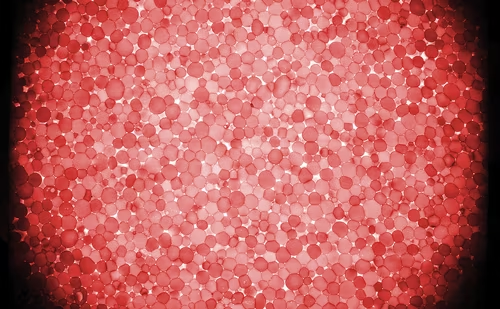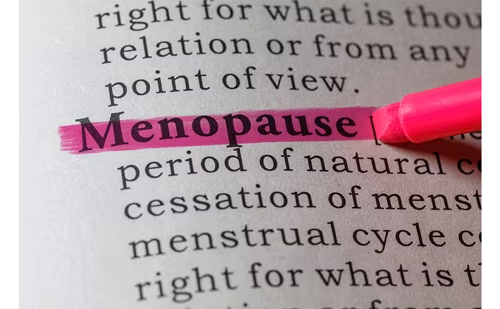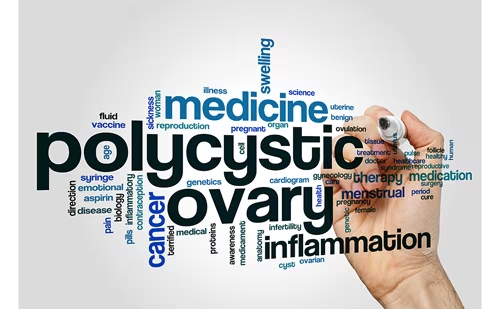The physiological role of testosterone in women has been studied for over half a century and continues to stir rich debate. Historically, the principal use of female androgen therapy revolved around enhancing sexual desire and as a potential chemotherapy agent for breast cancer. These earlier studies, using supraphysiological hormone doses, did demonstrate improvement in several parameters such as libido and sexual frequency, but at the expense of unwanted and sometimes irreversible virilization.
The physiological role of testosterone in women has been studied for over half a century and continues to stir rich debate. Historically, the principal use of female androgen therapy revolved around enhancing sexual desire and as a potential chemotherapy agent for breast cancer. These earlier studies, using supraphysiological hormone doses, did demonstrate improvement in several parameters such as libido and sexual frequency, but at the expense of unwanted and sometimes irreversible virilization. Because of this phenomenon, and the controversy over the etiology of hypoactive sexual desire in women in general, it is not surprising that clinical use remained limited for several decades. More recently, however, additional research has gained momentum and multiple studies have now looked at the benefit of physiological androgen replacement. In all, while androgens were previously felt to be a byproduct of ovarian steroidogenesis rather than clinically relevant hormones, numerous studies have raised the possibility that testosterone may have multiple beneficial effects in women.
So why the controversy? It stands to reason if a lack of hormone results in a clinically recognizable condition, physiological replacement should therefore rectify the problem without side effects. Unfortunately, this model is much too simple. Part of the challenge has been to define the existence of a true testosterone deficiency state with physical and emotional consequences resulting from a lack of hormone. Simply measuring testosterone levels and assigning an arbitrary cut-off point to define an androgen deficiency state is more complicated than it would appear. First, total serum testosterone is influenced by factors such as cyclic ovarian secretion, by bioconversion from adrenal androgens to estrogen, and by the quantities of protein bound (inactive) versus unbound (active) hormone. Other pitfalls include a lack of normative data and the general insensitivity of the assays that measure free and total testosterone at the low levels seen in women.1
Certain medications, such as oral contraceptives and estrogen replacement, also cause a reduction in free testosterone levels by elevating sex-hormone-binding globulin (SHBG). In addition, some women with surgically or medically induced low testosterone levels (e.g. after oophorectomy or on oral contraceptives) do not report having symptoms, and others with high testosterone (e.g. polycystic ovary syndrome (PCOS) patients) do not report increased libido. Thus, given the lack of a direct, universal correlation between symptoms and hormone levels, a symptom complex is more valuable in defining an androgen deficiency state. Susan Davis, MD, proposed such a profile in 1999, which included features of low libido, fatigue, blunted motivation, and lack of wellbeing in the presence of low bioavailable testosterone despite normal plasma estrogen levels.2
Circulating androgen levels are by no means static and multiple factors influence the rate and quantity of production throughout a woman’s life. For example, ovarian production of androsteindione (D4A) and testosterone are greatly influenced by pulsatile luteinizing hormone (LH) stimulation and subject to significant daily and monthly variation. Generally, circulating androgen levels in women rapidly reach their steady state in their 20s and 30s, then exhibit a gradual decline that continues through the menopausal transition to late in life.3 While aging does account for the reduction in both ovarian and adrenal androgen production, natural menopause does not result in a sudden additional decline in testosterone levels. In fact, the ovary produces more testosterone after the menopausal transition secondary to increased LHdriven thecal production.4
While a natural androgen deficiency state develops gradually throughout aging, several scenarios are seen in clinical practice that result in markedly decreased androgen production. Both hormone replacement therapy and oral contraceptives can decrease testosterone levels by as much as 40% by virtue of inhibition of pituitary LH secretion and by increasing levels of SHBG.5,6 The abrupt decline in circulating hormone following oophorectomy has been known for years, and several studies over the past two decades have also demonstrated that hysterectomy with ovarian preservation results in earlier onset of menopausal symptoms, as well as decreased levels of hormones.7,8 Adrenal suppression with corticosteroid therapy, although not commonly seen in general practice, also results in decreased production of the prohormone dehydroepiandrosterone sulphate (DHEA-S) and its downstream metabolites.9
There are several circumstantial lines of evidence that buttress the idea that androgens are physiologically relevant in women. Androgen receptors are widely distributed throughout the body in both reproductive and non-reproductive tissues, implying a wide multisystem effect of physiological levels of androgen in women.10 Multisystem androgen effects are demonstrated during early pubertal development when detectable physical changes include pubic hair, axillary hair, sexual desire, increased muscle mass, bone density, and linear growth.11 In adult women, while the majority of research and clinical use of androgen replacement therapy has been for hypoactive sexual desire, beneficial effects on other organ systems have also been demonstrated. In 1995, Davis noted a substantial improvement in vertebral and trochanteric bone mineral density in patients receiving a combination of testosterone with estradiol over estradiol alone, without evidence of unwanted androgenization.12 Androgens also have direct anabolic effects on skeletal muscle; several small studies have demonstrated that testosterone increases lean body mass and decreases fat mass in a doseand concentration-dependent fashion.13 Data on the cardiovascular effects of androgens in women are conflicting. Testosterone pellets do not appear to adversely affect lipids, but oral methyltestosterone has been shown to cause a reduction in high-density lipoprotein. Whether the latter places the patient at risk is inconclusive. While some epidemiological studies show a positive correlation between cardiovascular disease and elevated androgen levels, others have demonstrated no adverse effects in otherwise healthy women.14,15
Physiology of Androgen Production in Women
To better understand the role of androgen replacement therapy, it is useful to consider the physiology of the dominant androgens in women; testosterone, androsteindione (D4A), DHEA, and DHEA-S. Testosterone is by far the most clinically relevant in terms of serum concentration and biological potency. It is mainly produced by the peripheral conversion of circulating D4A, DHEA-S, and DHEA, but there are direct adrenal (25%) and ovarian contributions (25%) as well. Androsteindione has about onetenth the androgenic activity of testosterone. About 40% of circulating D4A is produced through the peripheral conversion of DHEA and about half from direct contributions by the ovary and adrenal cortex.16 DHEAS has virtually no androgenic activity and is produced almost exclusively by the adrenal cortex. It serves as a systemically available prohormone for target organ conversion to more functionally potent androgens; clinically, it is a marker for states of androgen excess because of its long half-life and stability of serum levels. Table 1 lists the average serum levels and biological potency of androgens in women.
Sexuality and Wellbeing
Sexual dysfunction is a common and distressing problem. Recent surveys have shown the prevalence of sexual dysfunction to be 43% in women aged 18–59 years and as high as 88% after menopause.17,18 Although human sexuality involves numerous anatomical, hormonal, and psychosocial inputs, multiple studies have established improved sexual function and sense of wellbeing in women receiving androgen replacement therapy. For example, in a recent phase III trial 533 surgically menopausal women on estrogen therapy receiving physiological testosterone therapy in the form of a 300mcg testosterone patch had a mean increase of 1.56 satisfying sexual episodes per month compared with an increase of 0.73 for placebo. Statistically significant effects could be seen as early as week five and were sustained through the 24-week study. All domains of sexuality (desire, pleasure, arousal, orgasm, responsiveness, self-image) were improved in the testosterone plus estrogen group compared with those receiving estrogen alone. No significant difference was seen in terms of hirsutism, acne, metabolic profile, or hepatic profile.19 During the past decade there have been several other well-designed studies that have shown similar results with oral, implantable, or transdermal androgens with no significant adverse effects. Additional cross-sectional studies have found a small but significant correlation between serum testosterone levels and sexual response.20,21 However, this finding was not confirmed by a recent cross-sectional study in which the authors measured circulating levels of androgens in 1,423 women and correlated them with a questionnaire regarding their sexual function. They also looked at variables such as desire, arousal, orgasm, pleasure, responsiveness, etc., and found no relationship between circulating androgen levels and any domain of sexual function.22 While this study does not necessarily refute the efficacy of androgen replacement therapy, it does show that the endogenous testosterone level itself is less helpful in diagnosing hypoactive sexual desire.
Modalities of Androgen Replacement
For many years high-dose oral methyltestosterone or depot intramuscular testosterone preparations were the only widely available medications in clinical practice. While efficacious, valid concerns over adverse lipid profiles and unwanted virilization such as balding, male-pattern hair growth, and deepening voice significantly restricted the use of these medications. This has led to the development of preparations that not only avoid first-pass hepatic effects, but also attempt to provide more physiological dosing of hormone. As one would expect, these pharmacologic advances have greatly influenced the number of products on the market. Worldwide, there are multiple drug delivery systems either available or currently undergoing clinical trials ranging from transdermal adsorption via patch, gel, and cream to implantable pellets. Although efficacious, intramuscular injections of testosterone have largely been abandoned in favor of systems that are more reliable, physiological, and acceptable to the patient.
Testosterone pellets have been used for a number of years in Europe and Australia, and their effects have been well described in the literature. Using a specially designed trochar, a 50mg testosterone pellet, with or without estradiol, is placed every three to six months in the right or left lower quadrant subcutaneous abdominal fat. The overall safety, reliability, and beneficial effects have been established with few adverse side effects; however, monitoring of serum testosterone levels, lipids, and hepatic function is recommended. Testosterone gel is approved for male testosterone replacement and widely available. Although a significant portion of the prescriptions are written for women, gel preparations should be used with caution. The concentration of testosterone is high and absorption rates are variable, leading to a high risk of delivering supraphysiological doses with consequent androgeniziation. Further studies demonstrating the safety of gel preparations in women are still necessary, but this remains a promising option for the future. DHEA, an indirect way to deliver testosterone through endogenous bioconversion, is available in oral, vaginal, and transdermal forms. Again, adverse lipid profiles and variable response to therapy limit its use, but it may be a reasonable alternative to consider in refractory cases, especially when endogenous serum DHEA appears low.
As mentioned previously, evidence from controlled trials supports the efficacy of a 300μg/day testosterone patch (Intrinsa®) for women already receiving estrogen therapy who develop hypoactive sexual desire after bilateral salpingo-oophorectomy.23 These studies were designed to last only 24 months and the consequences of long-term use remain unknown.19,21 Because of this concern, in 2004 the US Food and Drug Administration (FDA) elected not to approve the Intrinsa testosterone patch based on inadequate long-term safety data. Testosterone patches are currently available outside the US. If the preliminary data hold, the female testosterone patch may ultimately prove to be the best delivery system. Additional studies are currently under way to assess long-term safety.
In the US, no androgen replacement therapy has been approved for treating hypoactive sexual desire. Oral methyltestosterone (1.25–2.5mg) combined with 0.625mg esterified estrogen remains the only androgen preparation that the FDA has approved for women for the treatment of moderate to severe vasomotor symptoms, atrophic vaginitis, and vulvar atrophy associated with menopause. Methyltestosterone, when added to estrogen replacement therapy, appears to improve fatigue, libido, and body mass density while decreasing the frequency of hot flashes. Much higher doses of methyltestosterone (used in men) have been demonstrated to cause hepatic dysfunction and adverse lipid profiles and, possibly, induce hepatocellular carcinoma. Initial studies using low doses in women, however, show no hepatic complications, but several mild cases of virilization were observed, as well as clear adverse effects on lipid profiles; the long-term side effects of this medication have yet to be determined.24
The 2006 Endocrine Society General Practice Guideline recommends against making a diagnosis of androgen deficiency. They state that, although there is evidence for the short-term efficacy of testosterone in selected populations, such as surgically menopausal women, they recommend against the generalized use of testosterone by women because the indications are inadequate and evidence of safety in long-term studies is lacking.25
Concluding Remarks
It is clear that post-menopausal androgen replacement therapy is increasing despite the lack of clear guidelines regarding the diagnosis of androgen insufficiency. There are possibly multiple beneficial effects of physiological testosterone in women, but the data are not level 1A. Regulatory and expert panels in the US have stopped short of recommending androgen replacement therapy, and the North American Menopause Society advises using testosterone in post-menopausal women to enhance sex drive at the lowest dose for the shortest time necessary. Hypoactive sexual desire is a complex problem and involves multiple factors such as the patient’s health, her relationship with and availability of a partner, and use of other concurrent medications, as well as psychosocial factors. After ruling out confounding medical conditions, the current data suggest that a short trial of low-dose androgens is generally safe and may be efficacious for some women concurrently receiving estrogen therapy. Testosterone replacement in women, although imperfect, clearly improves sexual function, likely improves bone mineral density over estrogen alone, increases lean body mass, and may improve strength when given in physiological doses.23 The data on the testosterone patch have been promising, and this may ultimately prove to be the best delivery system after the long-term safety analysis is available. Until then, off-label use of these products will likely continue, but should be met with caution. Thorough patient counseling, evaluation of testosterone levels, and monitoring of hepatic function (including lipids) should be ensured. ■







